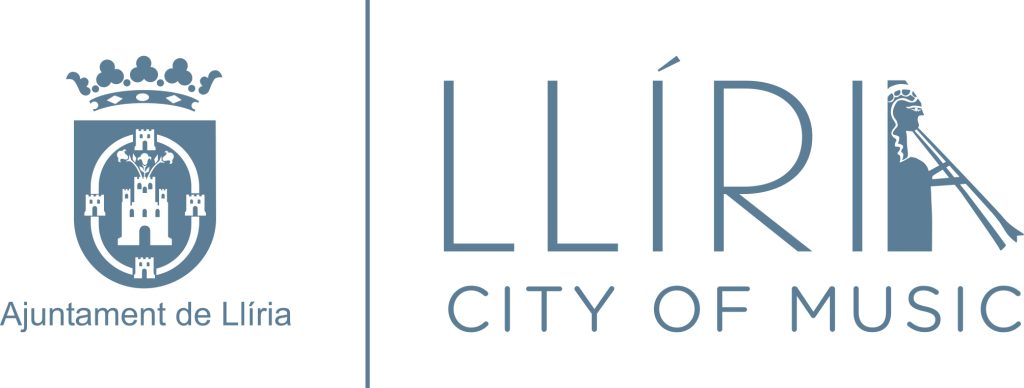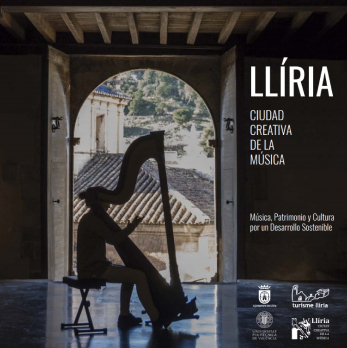
THE MAYOR OF LLÍRIA, THE COUNCILOR OF UNESCO CREATIVE CITY AND MEMBERS OF THE MUNICIPAL CORPORATION HAVE RECEIVED AT THE TOWN HALL THE MEMBERS OF THE EXPEDITION THAT HAS TRAVELED THROUGH KOREAN LANDS. The Mayor of the town, Joanma Miguel, the Councillor for Creative City, Paco Garcia and members of

THE LLIRIANO DIRECTOR, JOSÉ MIGUEL RODILLA, WILL LEAD THIS GROUP THROUGH THE LANDS OF SOUTH KOREA. This August, the ensemble Double Quintet “Llíria City Of Music” culminates its international tour with a visit to Asian lands, specifically in South Korea, where it will offer several concerts in the cities of

The second edition of the International Conducting Competition “Llíria City of Music” celebrated its grand finale yesterday Brian Liao is the name of the winner of the second edition of the International Conducting Competition “Llíria City of Music”, an event that establishes him as the best promise of international conducting.
Anterior Siguiente The candidates to become the best young baton in Europe are now ready to start the competition. The II International Conducting Competition “Llíria City of Music” celebrated its official inauguration yesterday with the reception of the 23 contestants – two have unregistered a few days before the beginning

The Llíria City Council has prepared a special series of concerts during the week of the competition The music will sound in a special way in Llíria between July 17th and 22nd. The city council has prepared a musical programme for the celebration of the second edition of the International

25 candidates. Four phases. A winner The search for the best international young baton is about to begin. The second edition of the International Orchestra Conducting Competition “Llíria City of Music” is held between July 17th and 22nd. These days, the 25 candidates from more than twenty different nationalities

A GROUP OF STUDENTS FROM THE LOCAL CONSERVATORY WILL SHARE MUSIC STAND AND MUSICAL EXPERIENCES WITH THEIR PORTUGUESE COUNTERPARTS The Professional Conservatory of Music of Llíria has started this week a new mobility within the European Erasmus + program through the Department of Artistic Education of the City Council edetano.

A TOTAL OF FOUR CONCERTS OF DIFFERENT MUSICAL STYLES WILL BE OFFERED FROM JULY 6 THROUGH 9 Turisme Llíria has organized the 5th edition of LLUM Fest (Llíria Universal Music), which will offer four spectacular concerts in the incomparable setting of the Roman Baths of Mura. All the shows of

THE INITIATIVE, IN COORDINATION WITH THE UNESCO CLUSTER OF MUSIC CITIES, ALSO AIMS TO FOCUS ON ODS 14 TO RAISE AWARENESS ON THE CONSERVATION OF UNDERWATER LIFE. “Llíria, as a member of the UNESCO Creative Cities Network, will celebrate next April 30, with an online event, the International

THE PLENARY UNANIMOUSLY AGREES THE INTEGRATION AND ACTIVE PARTICIPATION OF THE MUNICIPALITY AS FOUNDER IN THIS STATE PLATFORM The plenary session of the City Council of Llíria, agreed, in its last session, the integration of Llíria, as founder, in the Spanish Association of Creative Cities of UNESCO. As explained by

THE FESTIVAL WILL OFFER CONCERTS FROM JUNE 18 TO JULY 16 IN DIFFERENT ENCLAVES OF THE CITY On the occasion of June 21, European Music Day (Fête de la Musique), the “Llíria Universal Music. LLUM Fest”, the world music festival organized by the Department of Tourism of the Llíria City

THE LOCAL MUSIC CONSERVATORY WILL HOST THIS CONTEST ORGANIZED BY S&M MUSIC WITH THE COLLABORATION OF THE EDETANO CITY COUNCIL The Professional Conservatory of Music of Llíria will host, on June 18 and 19, the 2nd edition of the National Clarinet Competition “Llíria, Ciutat Creativa”, organized by S&M Music with



Este espacio arqueológico conserva uno de los conjuntos arquitectónicos relacionados con el mundo funerario, más importantes de la antigua provincia romana de Hispania.
Estos monumentos funerarios formaban parte de la antigua necrópolis de Edeta. Se conservan los restos de dos monumentos funerarios dispuestos junto con una de las principales vías de la entrada a la ciudad romana.
Junto a la vía necrópolis, se encuentra el umbral de la entrada al recinto funerario constituido por cuatro losas con la inscripción latina P. CLODIVS EVTYCHVS SIBI ET CLODIAE NATALI VXORI CARISSIMAE que significa “P. Clodio Eutico lo construyó para sí y para Clodia Natalia, su amadísima esposa”.
El primer monumento tiene la fachada decorada con pilastras acanaladas y una cámara interior con dos bancos corridos donde se celebraban las fiestas de los parientes. El segundo monumento pertenece al grupo de sepulcros turriformes y conserva una losa con un orificio central para realizar las libaciones que tapa una cavidad cúbica donde se depositaban las incineraciones y los ajuares funerarios.
Un audiovisual dedicado al mundo funerario romano puede contemplarse en una de las salas de este sótano arqueológico.